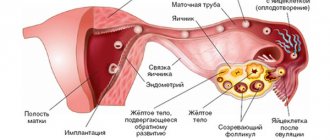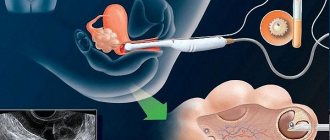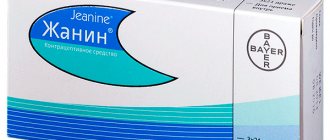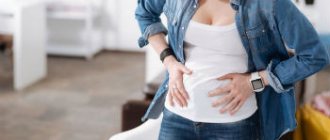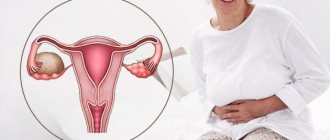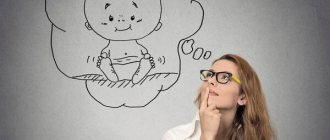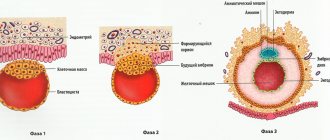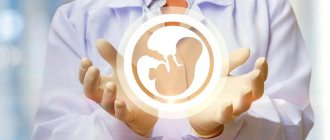Why does the ovaries pull and compress after the transfer of prepared embryos?
Embryo transfer is a serious manipulation that requires special care from the doctor and calmness of the patient, and if the ovaries pull, tingle or are painful, many perceive this as an unfavorable sign. When the ovaries are pulled, pain occurs in the lower abdomen or lower back after embryo transfer in the first 1-2 days, this may be a normal reaction. Such pain should not be cutting and prolonged. Many women feel swelling of the mammary glands, which is reminiscent of the sensations before menstruation. Sometimes they feel nauseous, feel sleepy, or, conversely, develop insomnia. There is no need to worry, but you should warn your doctor about this.
When, after the transfer of frozen embryos, the ovaries are strongly pulled, abdominal bloating is observed, legs are swollen and general health deteriorates, this may be an indicator of hyperstimulation syndrome (OHSS). This situation occurs frequently and may require adjustment of maintenance therapy. If embryo transfer is carried out, the ovaries as a result of OHSS increase in size, become painful, fluid from them sweats into the abdominal cavity, which causes disturbances in peristalsis and digestion, so patients often complain of flatulence. Nagging pain is associated with sprained ligaments or tension in the membrane.
Who can he threaten?
Ovarian hyperstimulation during IVF and pregnancy most often occurs in women from the following risk groups:
- age less than 35 years;
- thinness, lack of body weight;
- tendency to allergic reactions;
- polycystic ovary syndrome;
- the presence of highly active estradiol in the blood serum;
- previously diagnosed ovarian hyperstimulation syndrome;
- stimulation of superovulation using GnRH (gonadotropin releasing hormone);
- use of high and repeated doses of exogenous hCG.
Thus, the majority of women who have used IVF are susceptible to OHSS. Taking into account risk factors allows the doctor to identify complications in the early stages.
Overstimulated ovaries
When embryo transfer is completed, the ovaries become enlarged and become so tight that they can rupture and require surgery. In order not to end up with surgery, you need to contact a specialist in a timely manner. Taking into account the new symptoms, he will order an examination and change the dosage of medications to help with the embryo transfer. If the ovaries are enlarged in size on ultrasound, then the reason for this may be embryo transfer, preparation and maintenance therapy.
If during this period moderately hyperstimulated ovaries are formed, they are drawn a few days after the transfer of frozen embryos, then undesirable symptoms may appear:
- weakness, fatigue, drowsiness;
- dizziness;
- bloating of the abdominal wall;
- nagging pain or heaviness, the ovaries are painful;
- dyspeptic symptoms (nausea, vomiting);
- swelling of the limbs, due to which weight increases;
- decreased urination, rare urge.
In severe cases, the following appear:
- pain that radiates to the groin, shoulder blades, spine;
- swelling throughout the body;
- temperature increase;
- lowering blood pressure;
- decreased urination;
- difficulty breathing, shortness of breath;
- arrhythmia.
Such complications occur quite rarely; a mild form of OHSS is more common. If you have undergone embryo transfer and feel weak, drowsy, or have ovarian pull, be sure to call your gynecologist and tell us how you feel. It may be dangerous and require hospitalization.
Implantation of a fertilized egg into the uterine cavity is the final stage of artificial insemination using IVF and ICSI methods. After the procedure is completed, the patient returns home awaiting confirmation of pregnancy. At this time, her body is being rebuilt for the growth and development of the fetus or recovering from intensive medical intervention. This may be accompanied by various unpleasant manifestations. For example, sometimes after embryo transfer the ovary hurts.
The ovary is a paired organ of the reproductive system in which the female reproductive cell is born and matures. This gland produces hormones necessary for the coordinated functioning of the entire body of the fairer sex. A woman’s appearance, sexuality and ability to conceive and bear healthy offspring depend on its proper functioning.
Why does the ovary hurt during hormone therapy?
In a healthy woman’s body, one reproductive cell matures during each menstrual cycle. In order to increase the chances of successful conception, hormonal therapy is performed to increase the number of eggs. As a result of drug intervention, the ovary hurts and increases in size. The more follicles managed to grow in one course, the longer the ovary hurts after the end of this stage. Painful symptoms are often observed even after embryos are transferred into the patient’s uterus.
Why does the ovary hurt during puncture?
When the follicles reach 20mm, the ovary is punctured to collect mature eggs. It usually occurs under general or epidural anesthesia. This makes it easier for the doctor to remove biological material from a relaxed body, and the patient does not experience pain from the injection. However, with this manipulation, the ovary is punctured with a wide needle and it takes time for complete healing. Therefore, despite the fact that the embryo transfer has already completed, the ovary hurts.
Why does the ovary hurt after completing all stages of IVF?
Regardless of whether pregnancy occurs, the ovary has done its job. However, it takes time to restore normal activity. To speed up the rehabilitation period, you should eat properly, that is, consume enough protein of animal and plant origin, healthy fats, and complex carbohydrates. Increase the amount of fluid you drink to two liters per day, avoid intense sports and intimacy. In this case, you will soon notice that your stomach no longer hurts.
Why does the ovary hurt during hyperstimulation?
Sometimes artificial insemination procedures can cause various complications, one of which is hyperstimulation. A large number of follicles leads to an increase in estrogen levels in the blood. Because of this, the ovary hurts, and the permeability of the capillaries is disrupted, which leads to edema in the abdominal, pulmonary or pericardial cavities. If this complication has not become severe, the disease can be cured at home with the help of diet, vitamin complexes and quality rest.
Ovarian pain due to abscess
Any instrumental intervention can cause infectious processes. Symptoms appear both immediately after puncture and after embryo transfer. The ovary becomes inflamed, festeres and hurts. Therefore, if, in addition to severe pain, the temperature rises to 39-40 degrees, you should urgently call an ambulance, since penetration of an abscess into the abdominal cavity often ends in death. For treatment, the surgeon drains the desired area and prescribes a course of antibiotics.
The birth of a child requires enormous efforts from the female body, changes occur.
When the lower back hurts after embryo transfer, a woman should listen to her body. Successful fertilization, both in laboratory and in natural conditions, is often asymptomatic.
If your lower back hurts after embryo transfer, this may indicate a normal course of the process.
Sometimes this indicates problems with implantation, diseases of the female reproductive system, and problems with the spine.
Forms of OHSS
There are two forms of ovarian hyperstimulation syndrome:
- Early OHSS . It develops almost immediately after the maturation of the egg (ovulation). If implantation of the fertilized egg fails, that is, in the absence of pregnancy, it goes away on its own with the onset of the next menstrual cycle. If the embryo successfully attaches to the wall of the uterus and the period of gestation begins, then early OHSS requires treatment, since there is a high probability of transition to a late form.
- Late OHSS . Develops from early onset of pregnancy. Appears from 5 to 12 weeks of gestation. It is often severe and requires immediate treatment.
Depending on how pronounced the signs of ovarian hyperstimulation are, there are 4 degrees of the syndrome: mild, moderate, severe and critical. In the first case, women barely notice discomfort in the lower abdomen; in the latter, the condition requires urgent hospitalization.
Causes of pain in the lower back
A woman who has been waiting for a long time for the birth of a child undergoes multiple examinations.
With pathologies and diseases in the acute stage, she will not be allowed to undergo in vitro fertilization. This 99% eliminates the possibility of illness or inflammation at the time of transfer.
Often after IVF, the lower back is pulled due to stress and nervous tension after the procedure.
Doctors note other variants of pain syndrome:
- Individual characteristics of the body, low pain threshold. Implantation of biological material is carried out under local anesthesia.
Some time after the implantation, the effect of anesthesia stops, and sensitivity returns to the nerve endings in the uterus.
Lower back pain after embryo transfer due to irradiating signals. They occur in places not associated with the source of pain.
The back aches due to the implantation of embryos in the uterus.
- Also, after IVF, the lower back is pulled if there is an increased production of the hormone of the second phase of the cycle - progesterone. It is responsible for bearing a child and is produced by the adrenal glands, but mostly by the ovaries.
Progesterone relaxes smooth muscles, the entire load is transferred to the spinal column, which is accompanied by pain.
- If suddenly after IVF your lower back hurts, your doctor will tell you why. Sometimes this is associated with a complication in the form of ovarian hyperstimulation, they increase in size and cause pain in the suprapubic area and in the back.
The ovaries are stimulated with hormones before implantation; it is important to monitor the woman’s hormonal levels before implantation. Hyperstimulation can interfere with the implantation of embryos: follicles still continue to mature in the ovaries, which should no longer be the case.
Important! This symptom is often encountered by expectant mothers suffering from the formation of cysts or PCOS.
Doctors associate the main reasons why the lower back hurts after embryo transfer with the production of progesterone, implantation, or pain after the anesthesia wears off.
Sometimes the syndrome indicates problems with hormonal function, for which the ovaries are responsible. But there are other preconditions of an unpleasant nature.
Other factors that cause pain
Discomfort in the lumbar region has multiple causes. Sometimes it is caused by diseases of the reproductive organs, in particular erosion, inflammation of the endometrium, previous abortion with unsuccessful curettage, and genital infections.
Doctors highlight a wide list of possible causes:
- This also includes infections caused by violation of sanitary and hygienic standards during surgery in the pelvic area.
After embryo transfer, lower back pain occurs because previous diseases are not completely cured, and pregnancy is stressful or occurs against the background of previously undiagnosed pathologies.
- Spinal curvature, which is a chronic condition, lower back pain after embryo transfer due to the enlargement of the uterus, where several fertilized eggs can implant at once. The uterus grows, the load on the back in the lumbar region increases.
- Prolapse of the kidneys. Due to stress and nervous exhaustion, the kidney may drop, causing pain. For this reason, after embryo transfer, the lower back in women with insufficient body weight is pulled.
Colds with a temperature above 38 degrees and cystitis cannot be ruled out.
During seasonal diseases, preventive measures are taken.
But the possibility of psychosomatic disorders cannot be ruled out. A cold manifests itself against a background of nervous exhaustion and fatigue.
Normal symptoms after embryo transfer
An hCG test can accurately inform you about the onset of pregnancy in the early stages. It is prescribed 2 weeks after IVF.
Before this, the expectant mother’s sensations and physiological signs can indicate that everything is going well.
- When, after embryo transfer, the lower back hurts, but the pain is tolerable and does not cause discomfort.
- There is an exacerbation of the sense of smell, taste preferences change, or toxicosis appears.
- The breasts swell, veins on the face or décolleté appear more clearly.
- Mood and sleep patterns change, resulting in insomnia or drowsiness. Possible irritability, tearfulness, apathy.
When, after the transfer of embryos, the lower back is pulled, but the condition is tolerable, the body temperature is not higher than 37.5 degrees, and minor nagging pain occurs in the lower abdomen, possible pink discharge, this is considered normal.
Important! A woman should focus on individual feelings. If severe pain, deterioration, or bleeding occurs, urgently contact the medical personnel who are responsible for IVF.
In what cases should you consult a doctor?
If bed rest and adherence to the treatment regimen prescribed by a specialist do not improve the condition, or the lower back hurts after embryo transfer for a long time or periodically, medical attention is needed.
Pay special attention to the following symptoms when it is important to call a doctor:
- The occurrence of fainting, weakness, severe pain. Sometimes this indicates internal bleeding.
- Hyperstimulation, which expectant mothers fear, will be indicated by a feeling of fullness in the pelvic area, shortness of breath, discomfort; sometimes, after embryo transfer, the lower back hurts for this reason.
Nausea and vomiting occur, and blood pressure may decrease. If taking antispasmodics does not bring relief, call a doctor immediately.
- If you experience chills, fever above 37.5 - 38 degrees, fever, foul-smelling vaginal discharge.
- A dangerous sign is bleeding, prolonged discharge mixed with blood, if after embryo transfer the lower back hurts frequently, periodically or severely.
Doctors advise once again to play it safe and contact the clinic at the slightest doubt whether everything is in order with the woman’s body.
Statistics show that in 15% of difficult cases, medicine can save a long-awaited pregnancy.
Conclusion
In the case of natural fertilization, pain manifests itself in 10 cases out of 100, more often women after IVF have lower back pain, why, experts answer: this is a serious intervention in the body. For the first 5–7 days, you need to be patient and take care of yourself.
A woman should know: pain indicates that not everything can go smoothly, but you need to help yourself. They take medications prescribed by a doctor, often these are hormonal and painkillers. They adhere to a calm daily schedule, pay attention to proper sleep, physical and emotional peace.
They try to rest more, walk in comfortable shoes, without high heels, which create additional stress on the lower back. And they remember emotional comfort. Stress and nervousness increase the risk of uterine tone, which manifests itself in spinal pain.
Diagnostics
Treatment of ovarian hypersitmulation syndrome is prescribed based on diagnostic data.
It includes:
- studying the patient’s complaints and medical history;
- general and gynecological examination, including palpation of the abdomen;
- Ultrasound of the pelvic and abdominal organs;
- blood test (general, biochemical, hormones);
- Analysis of urine;
- ECG and ultrasound of the heart;
- chest x-ray.
The list of examinations can be shortened or increased, depending on the clinical picture of the syndrome. Sometimes a consultation with specialized specialists is prescribed: pulmonologist, cardiologist, gastroenterologist.
Consequences
The consequences of ovarian hyperstimulation depend on how timely medical care was provided. The likelihood of their development increases in proportion to the severity of the syndrome.
The most serious consequence is premature ovarian failure syndrome. Due to their artificial simulation, functioning stops prematurely, before the onset of menopause. The maturation of eggs stops, menstruation is disrupted and disappears. If both ovaries are depleted, the woman becomes infertile.
Prevention
How to avoid the development of ovarian hyperstimulation syndrome during IVF?
The main preventive measures are as follows:
- cryopreservation of cultured embryos until the onset of the natural menstrual cycle (not stimulated by drugs);
- stopping or reducing the dose of stimulant medications;
- constant monitoring of estrogen concentrations in the IVF cycle;
- careful observation of the doctor over the patient’s condition.
To prevent the transition of mild OHSS to more severe ones, it is necessary to inform the doctor about even minor changes in well-being. This is especially important if fertilization was successful and pregnancy began to develop.
Ovarian hyperstimulation syndrome occurs due to the use of hormonal drugs in the initial stages of IVF. It is diagnosed to a mild degree in most patients and can be eliminated in a short time, sometimes even without the use of medications.
When pregnancy occurs, the risk of increased OHSS is higher, so medical supervision is required. In moderate and severe cases, treatment is carried out in a hospital.
User comments
Forgive me, this may not be a modest question - but how did you get permission to go to ecology after conization? Or did I miss something? My husband and I just started getting tested for IVF and I was diagnosed with stage 1 cervical cancer. And the oncologist told me that it would be possible to go only in a year. Even if she gives permission earlier, the clinic itself will not accept it. We wrote to the clinic and they confirmed that only in a year
I don’t understand anything at all. Why weren’t you asked for any documents to get a quota? Sorry for asking so many questions. What documents did you submit to receive a quota?
I also had tests taken after the operation and the answer came back that everything was clear. All cancer cells were removed. I just don’t understand how the oncologist gave permission. Or do we only have such responsible doctors
Well, the second important aspect is pain in my eyes, I immediately tell the doctor that I declare with responsibility about all the consequences and I will give birth 100%, and this has a very strong influence on doctors. That's why they don't put a spoke in my wheels! If it were my daughter, I would try to dissuade her from such a step.
Yes, everything is clear. I also told the doctors this. But the oncologist herself told me that even if she gives me permission in half a year and not a year, then no clinic will take me. And they won’t give me a quota until the due date has passed. That's why I was surprised how you did it. It’s just that even last week I went to see the dentist and saw there (according to the medical pole) and then they asked in oncology, have you already had surgery? And before the operation, all the doctors double-checked me, just as they did for astronauts, and they checked the glasses before the operation in 3 hospitals. An accurate diagnosis of cancer has not yet been established. They discovered it in May and operated on it on October 8. And the worst thing is that I was initially diagnosed with infertility due to an allegedly obstructed tube. And the clinic recommended that I remove it before IVF. I went and paid, they removed it, and after 5 days they diagnosed cancer. Now I understand that infertility was due to cancer and that it was in vain that I removed the tubes. Everything is our speed. You are very lucky. Good luck to you
The birth of a child requires enormous efforts from the female body, changes occur.
When the lower back hurts after embryo transfer, a woman should listen to her body. Successful fertilization, both in laboratory and in natural conditions, is often asymptomatic.
If your lower back hurts after embryo transfer, this may indicate a normal course of the process.
Sometimes this indicates problems with implantation, diseases of the female reproductive system, and problems with the spine.

